Published August 19, 2025 | By Marcelo Couto Bicalho Braga | sustainability_blog
Plastic pollution is one of the biggest environmental challenges today. With billions of tons accumulated in oceans, soils and even in the air, scientists are looking for innovative solutions to mitigate this problem. Amid the exuberant biodiversity of the Amazon, a surprising discovery rekindles hope: the fungus Pestalotiopsis microspora, capable of degrading plastic even in environments without oxygen.
The image is iconic and painful: a sea of plastic bottles, bags and packaging choking our planet’s ecosystems. Plastic, once a symbol of modernity, has become one of the greatest environmental villains of our era. Its hardiness, precisely the quality that made it so popular, is its ecological curse, with some types taking hundreds of years to decompose. While humanity is desperately searching for solutions – from advanced recycling to banning single-use items – nature, in its wise and quiet ingenuity, may have already provided the answer. And it came from deep in the Amazon, in the form of a small and promising fungus: the Pestalotiopsis microspora.
This discovery is not just another footnote in the history of science. It represents a beacon of hope, a glimpse of a future where plastic pollution can be tackled not with more complex chemistry, but with simple, elegant biology. This article takes a deep dive into the journey of this extraordinary fungus, exploring the science behind its capability, the revolutionary potential it carries, and the challenges that separate lab-based discovery from global-scale application.
The Amazon: A Treasure Chest (still) Unexplored
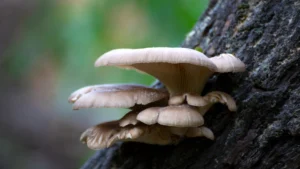
To understand the magnitude of this discovery, it is crucial to return to the point of origin: the Amazon rainforest. Far beyond “the lungs of the world”, the Amazon is the largest natural biochemistry laboratory on the planet. In every leaf, trunk, and inch of soil, there is a microscopic war for survival, where organisms develop incredibly powerful chemical weapons and tools to feed themselves, defend territory, and thrive.
It was in this cauldron of evolutionary innovation that a team of Yale University students, led by Professor Scott Strobel, embarked on an expedition in 2011. Their goal was to isolate endophytes – microorganisms that live inside plants, often in a symbiotic relationship. The hypothesis was that these endophytes could produce enzymes useful for breaking down complex compounds, an essential ability to colonize their hosts.
They collected samples from a plant of the genus Astrocaryum, and it was inside it that they found Pestalotiopsis microspora. What followed was a discovery that would echo through environmental science circles.
What is Pestalotiopsis microspora?
Discovered by researchers at Yale University during an expedition to the Ecuadorian Amazon, Pestalotiopsis microspora is an endophytic fungus — it lives inside plants without causing damage. What makes it special is its ability to consume polyurethane, a type of resistant plastic, as the only source of carbon.
Scientific highlight: The fungus survives in anaerobic environments (without oxygen), such as landfills, where most organisms cannot act.
How does fungus degrade plastic?
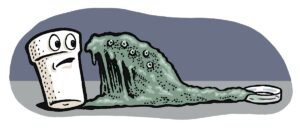
The process occurs through enzymes that break down the polymeric chains of polyurethane. These enzymes work like “molecular scissors,” turning plastic into smaller compounds that can be absorbed and metabolized by the fungus.
Fun fact: Unlike other microorganisms, Pestalotiopsis microspora doesn’t need additional light, oxygen, or nutrients to degrade the plastic—only the polyurethane itself.
By isolating the fungus and subjecting it to different substrates in the laboratory, the researchers made an electrifying observation: P. microspora was able to survive and develop on an exclusive diet of polyurethane (PU), a type of plastic widely used in foams, insulation, adhesives and parts of shoes. Even more impressive: he did this in anaerobic environments, that is, without the presence of oxygen.
This last characteristic is particularly crucial. It means that the fungus could theoretically be used at the bottom of landfills, where mountains of plastic are compacted without access to air, an environment where traditional biodegradation processes are unfeasible.
But how does he do it? The secret of P. microspora lies in the enzymes it secretes. These enzymes, acting as molecular scissors, are able to break down the long, tough polymer chains of polyurethane into smaller units, which the fungus then absorbs and uses as a source of carbon and energy for its own growth. In short, it doesn’t just “break” plastic; he “eats” it.
The Magic of Enzymes: Deconstructing the Polymer
Polyurethane is a plastic that is particularly difficult to recycle or degrade due to its chemical structure, which includes strong urethane bonds. Traditional disposal methods often involve flaring (releasing toxic gases) or simple accumulation in landfills.
- microspora enzymes, identified as serine hydrolases, specifically attack these bonds. The process can be simplified into three steps:
- Bio-Colonization: The fungus attaches itself to the surface of the plastic.
- Enzyme Secretion: It releases its specialized enzymes into the environment around it.
- Biodegradation and Assimilation: Enzymes break down long polymers (polymers) into smaller monomers and digestible molecules. These are then absorbed by the hyphae of the fungus (its “filaments”), serving as food.
The end result is the transformation of a persistent pollutant into fungal biomass (the fungus’ own body), carbon dioxide, and water. Under controlled conditions, studies have shown significant degradation of plastic in a matter of weeks.
Beyond Polyurethane: Broadening the Horizon
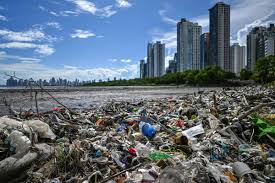
Research with P. microspora opened a door to a new field of study: the mycorremediation of plastics. Scientists around the world have begun to investigate other fungi and bacteria with similar abilities. Several other species, such as Aspergillus tubingensis and Zalerion maritimum, have shown the ability to degrade other types of plastic, such as polyethylene (PE – used in bags and packaging) and polyethylene terephthalate (PET – from bottles).
This suggests that the strategy of using biological organisms is not limited to a single type of plastic. We are facing a potential natural arsenal to deal with the diversity of plastic waste we generate.
From the Lab to the Real World: The Challenges of Scale
Herein lies the difference between an exciting discovery and an applicable solution. Despite the immense potential, turning P. microspora into a large-scale tool to combat plastic pollution presents a number of complex challenges:
- Speed: While the fungus degrades plastic in weeks in a petri dish, the volume of waste on the planet is astronomical. The natural rate of degradation is still very slow compared to the pace of production. Optimizing this process is critical.
- Control and Containment: Releasing an organism genetically adapted to consume plastic into the open environment without strict control could have unintended and disastrous consequences. Imagine if it started degrading plastics still in use, such as electrical wiring insulation, hospital or automotive components. Closed, controlled bioreactor systems are the most likely route for application.
- Byproducts of Degradation: It is vital to ensure that the biodegradation process does not produce byproducts that are more harmful or toxic than the original plastic.
- Economic Scalability: Developing the industrial infrastructure of bioreactors capable of processing tons of plastic waste with fungal mycelia would require massive investments and a viable business model.
Implications for sustainability
The discovery has the potential to revolutionize plastic waste management:
- Bioremediation of landfills: Application of the fungus to accelerate the decomposition of plastics in hard-to-reach places.
- Microplastic treatment: Possibility of adaptation to contaminated aquatic environments.
- Circular economy: Transformation of plastic waste into organic matter, closing the life cycle of materials.
- Mass Production of Enzymes: Instead of growing tons of the fungus, scientists can isolate the genes responsible for producing the plastic-degrading enzymes and insert them into fast-growing and safe microorganisms (such as yeast or non-pathogenic coli bacteria ). These “microbial factories” could then produce the enzymes in large quantities to be used in waste treatment plants.
- Pretreatment of Waste: Enzymes could be used in recycling plants for pre-“digestion” of contaminated or multi-layer plastics, which are currently impossible to recycle mechanically, turning them back into chemical building blocks to create new plastics – a truly circular cycle.
- Specialized Bioreactors: Develop accelerated industrial composting tanks, where specific plastic waste is inoculated with the fungus or its enzymes under optimal conditions of temperature, humidity, and agitation, transforming a passive landfill into an active biodegradation “factory.”
Challenges and limitations
Despite the enthusiasm, there are still obstacles to its large-scale application:
- Industrial scalability: Production of the fungus in large volumes requires biotechnological infrastructure.
- Efficiency outside the laboratory: Performance in natural environments may vary.
- Ecological safety: It is necessary to ensure that the use of the fungus does not negatively affect other ecosystems.
Environmental biotechnology: a powerful ally
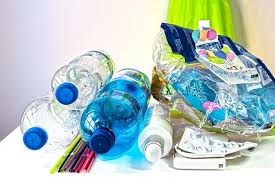
The use of living organisms to solve environmental problems is one of the most promising fronts in biotechnology. Pestalotiopsis microspora is a clear example of how biodiversity can offer natural solutions to modern challenges.
Preserving the Amazon is preserving the future: The forest is home to thousands of species that are still unknown, with the potential to cure diseases, clean up the planet and transform industries.
ESG and corporate innovation
Companies that adopt ESG practices can benefit from research on the fungus:
- Reduction of environmental footprint: Use of biodegradable technologies in industrial processes.
- Innovation in packaging: Development of materials that degrade with the help of fungi.
- Strengthening the institutional image: Investments in sustainable solutions generate brand value.
Environmental education and social engagement
Disseminating findings like this is essential to promote awareness:
- Schools and universities can use the example of the fungus to teach about biodiversity and sustainability.
- NGOs and environmental collectives can include the topic in education and mobilization campaigns.
Paths to the future
Research on Pestalotiopsis microspora is just beginning. Future possibilities include:
- Genetic engineering: Modification of the fungus to act on other types of plastic.
- Biofactories: Facilities dedicated to the production of degrading fungi.
- Industrial composting: Integration of the fungus into composting processes for mixed waste.
Conclusion: A Whisper of Nature We Need to Hear
The discovery of Pestalotiopsis microspora is more than a scientific curiosity; it is a testament to nature’s power of resilience and innovation. It’s a potent reminder that as we face crises of our own creation, the most elegant solutions may already exist, waiting to be discovered in the most biodiverse places on Earth.
It is not a silver bullet that will solve the plastic crisis on its own. The definitive solution still depends radically on reducing consumption, redesigning products and packaging, and drastically improving traditional reuse and recycling systems.
However, the Amazonian fungus turns on a light at the end of the tunnel. It represents the promise of a future where technology does not try to dominate nature, but rather learns from it in a synergistic partnership. It offers us hope that one day, the mountains of plastic we have accumulated may not be an eternal monument to our waste, but rather a resource to be harvested and transformed by some of the smallest and humblest organisms on the planet. The sustainable revolution may literally be sprouting from the ground.
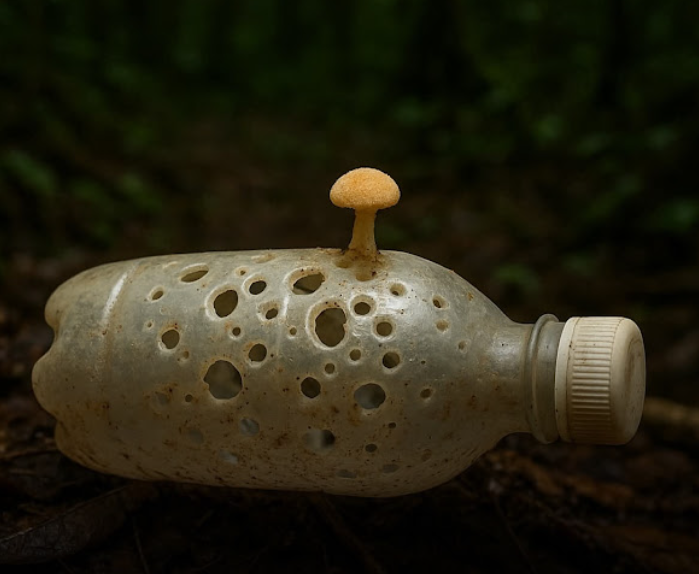
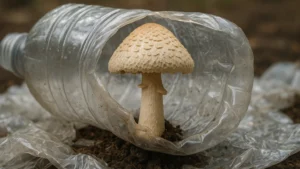
Sem comentários